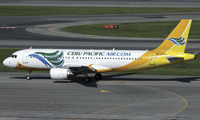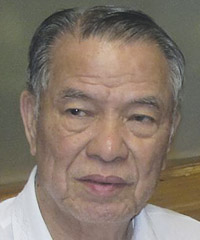Cover Story
TEST ONLY -- SHAKE-OUT
San Miguel will take management control at Philippine Airlines and its subsidiary, Air Philippines, in a bid to turnaround losses and halt rival Cebu Pacific Air’s speedy rise in the marketplace
May 1st 2012
Much is changing in the Philippines airline industry. Its national carrier, Philippine Airlines (PAL), formed in 1941 and the oldest carrier in Asia, has witnessed its dominance evaporate in the last couple of years as low-cost carriers, particularly ambitious and fast growing local carrier, Cebu Pacific Air, have eaten sizably into its once buoyant domestic market. Now its major rival is looking to twist the knife even further by taking on PAL offshore. Read More »
 |
| 'We have to be aware of what the local competition is doing, but we benchmark ourselves against a global pool of LCCs' |
| Lance Gokongwei Chief Executive Cebu Pacific Air |
In a bid to stem the onslaught of the competition, PAL’s 78-year-old owner, Lucio Tan, is selling $500 million of his shares to San Miguel Corporation (SMC) and relinquishing management of PAL and subsidiary Air Philippines, also known as Air Phil. A re-fleeting programme, which could cost up to $1 billion, is one of the new regime’s priorities.
Cebu Pacific chief executive, Lance Gokongwei, will revel in the challenge. He is busy launching his airline towards new horizons, but some industry observers say an international long-haul foray could be a risk too far.
Despite cost pressures from high fuel costs and intense competition, Gokongwei believes he has the recipe for success. Having pinned down a 45% share of the Philippines domestic market in 2011 - PAL and AirPhil hold 43.9% between them - Cebu is setting out to make significant inroads into international routes.
Already flying to more than 20 destinations around Asia, using A319s and A320s, Gokongwei has leased eight A330s, which will begin arriving next year, for long-haul services. With PAL carrying 25% of all international traffic to and from the Philippines, Cebu has a 16% share of the offshore business. Potentially, the long-haul Airbuses will make a significant dent in PAL’s present market.
Cebu has done its homework. Gokongwei believes the long-haul LCC product will work. Market research revealed that of the top 10 international, long-haul routes from the Philippines, that is flights in excess of four hours, its rival PAL was serving only two of them non-stop, San Francisco and Los Angeles.
It found the majority of the remaining routes, primarily to the Middle East, were underserved. “There are over nine million Filipinos working overseas, including almost three million in the Middle East, maybe another half a million in Australia and another million in Europe,” said Gokongwei.
 |
| Cebu Pacific Air: leasing eight A330s for long-haul routes |
“According to the data we have seen less than half of the Filipinos who fly these routes fly direct. They take one or two stops through places like Singapore, Bangkok and Hong Kong. If we were able to deliver a direct product at an affordable price there is certainly enough opportunity for us out there.
“We probably won’t have the same unit cost advantage that we have against legacy carriers on short-haul. But we believe the seating density we have introduced, as well as putting the newest most suitable aircraft on these routes [the A330], we will be able to generate a sustainable unit cost advantage versus the competition with its more expensive two or three class service in these markets.”
Finally, Gokongwei is convinced Cebu’s dominant domestic market share, with its hub in Manila, gives it an additional advantage. Most overseas contract workers are not based in the Philippines capital, but are from outlying regions across the country. This means Cebu will feed strong traffic from its more than 30 domestic routes onto its long-haul international services.
Four of the A330s will arrive by the third quarter of next year, with the remaining aircraft scheduled for delivery before 2016. “We have over $300 million in cash on our balance sheet. We are in a position to accelerate if the need arises,” said the chief executive.
Routes have not yet been finalized, but the Gulf states and Saudi Arabia are high on the agenda. Also being considered are India, Pakistan, Australia, New Zealand, the U.S. (Hawaii) and Russia.
Gokongwei insists he aims to keep the operation simple, focusing only on non-stop routes.
Speaking on the shake-out at PAL, Gokongwei said: “The effect of the San Miguel recapitalization of PAL will certainly be significant. I would expect them to first replace their widebody fleet, which is older than their narrowbody fleet. Their narrowbodies are fairly new and mostly leased. Maybe they will re-fleet in four or five years when the A320neo and the B737MAX become more available.”
 |
| Philippine Airlines owner, Lucio Tan: sold $500 million of his shares to San Miguel Corporation |
However, he believes Cebu has a major advantage because it has ordered 23 A320s and 30 A321neos, the first of which will arrive in 2017. If PAL wants to order the aircraft it will probably have to wait at least until 2019 for deliveries.
“We have to be aware of what the local competition is doing, but we benchmark ourselves against a global pool of LCCs,” he said.
Locally, in addition to PAL and AirPhil, Cebu competes with Zest Air, SEAIR and AirAsia Philippines. Between them they operated 66 A320 type jets at the end of 2011. By the end of this year, according to announcements by various carriers, that number will be 84.
“Internationally there are a lot of new LCCs from Korea [Jeju Air, Jin Air, Air Busan]. There is more frequency from Singapore and the like. We can only expect the competition to increase, at least in the next couple of years. But we are confident we will stay in the black,” said Gokongwei.
The carrier is in a strong financial position to push its plans through, although it has been hit by the high cost of fuel, which accounts for half its costs. Jet fuel prices last year were 39.3% higher than the previous year. The increase trimmed net profit in 2011 to $85 million, a 48% fall compared with 2010.
However, total revenue rose 16.7%, to $791.5 million, as passenger numbers climbed 14% to 11.9 million. The carrier is on track to transport 14 million passengers this year.
With a staff of 2,800, Cebu operates a fleet of 10 A319s, 21 A320s and 8 ATR 72-500 turboprops. It has only modest fuel hedging, some 20% of its requirements for this year, with no hedges in place beyond 2012.
The added competition is putting pressure on fare levels. “Fares are pretty flat for the year so the challenge will be managing that. Fuel is running 15% to 16% ahead of last year so the exercise will be to reduce those non-fuel unit costs,” he said.
“We think as the market continues to grow there will be opportunities to increase fares down the road.”
| Cebu to almost double pilot numbers Cebu Pacific is building a $50 million training facility, the Philippine Academy for Aviation Training, a joint venture with CAE, of Canada. Construction began in January at the former Clark U.S. military base and is expected to be completed in the third quarter of this year. Cebu has 500 pilots, but will need another 300-400 flight crew in the next five years. However, the aim is to establish a world-class aviation training hub in Southeast Asia, which will also provide third party contract work. Ultimately, the centre is expected to cater for 2,500 Filipino and expatriate pilots a year. The centre will be equipped with two A320 full flight simulators with room for two additional simulators. |
Cebu will not be following competitors like Jetstar, Tiger Airways and AirAsia by opening subsidiaries offshore. “Cebu Pacific is a very Philippine-centric brand. We are continuing to add capacity in our short-haul fleet at the rate of 12%-15% a year. And there is the launch of the long-haul brand as well as the setting up of a flight academy with CAE.
“These projects will certainly require the full attention of management and the full concentration of our balance sheet,” said Gokongwei.
Ancillary revenue remains a key part of Cebu’s revenue plan. Last year, it accounted for around 20% of its income.
“We are working to improve that figure. We have to focus on more value-added items such as selling insurance and hotel packages. We are continuing to improve our duty free product. We are going to start serving hot meals in a couple of months,” said Gokongwei.
“We still think there’s a lot of room for improvement in our operations. Certainly the macro environment isn’t helping so it’s our job to try to continue finding those operating efficiencies and improve our customer service standards.”